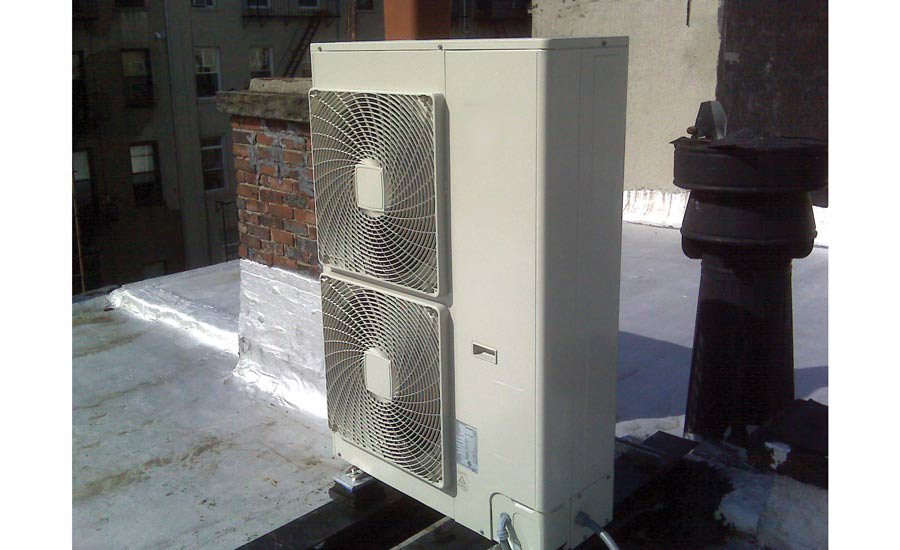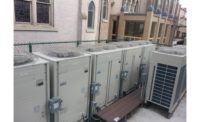As HVACR technology continues to advance, contractors often find themselves navigating new learning curves on a regular basis. The topic of VRF is no exception. The ACHR NEWS spoke with two contractors from opposite ends of the country about residential VRF and asked them to share their experience and wisdom regarding this burgeoning technology.
Chris Wisniewski is principal and vice president of Integrate Comfort Systems (ICS), Bellville, New Jersey. Travis Smith is president of Sky Heating & Air, Tualatin, Oregon.
ACHR NEWS: VRF is moving further into the U.S. market. What customer trends are developing in regard to request frequency, places VRF is used, and overall satisfaction with the equipment and its function?
Wisniewski: The VRF system can be used in almost any application, and we have been installing VRF in high-end residential applications since 2004. I find that more customers are aware of the systems, and the customers that had VRF systems previously are now accustomed to multiple zones and the ability to control multiple zones. Before, they might have had only one or two zones per floor; now, they have a separate zone for almost every habitable space. This is becoming a new baseline of comfort that customers are now used to and do not wish to entertain anything else except these kinds of systems. From residences to offices, being able to satisfy the needs of a small zone without overheating or overcooling is just pure satisfaction that often could not be enjoyed with other systems.
Smith: More often, we are now seeing customers skip replacing their oil furnace with gas and go straight to VRF technologies. In our climate, we can replace oil- or gas-heated homes’ heating systems with a full VRF. We are also seeing more and more customers adding VRF to their homes for room additions or second story add-ons where running ducting and possibly replacing the current system doesn’t make sense.
ACHR NEWS: How are advancements in VRF technology affecting your business practices?
Wisniewski: VRF has forced us to have higher-level technicians that are able to use laptops and service checker devices that integrate into most VRF systems. The sheer technology in these systems requires techs that are far above entry level. Thermodynamics and electronics are combined in these systems; a higher level of computer usage and controls understanding is required. Being that we started installing these in 2004, it also gave us an advantage over companies that were slow to work on them. I still know some HVAC companies that stay away from them and have never installed a single VRF system.
ACHR NEWS: What type of training and equipment for your technicians is necessary when implementing VRF products and services?
Smith: Our company and its technicians attend a lot of distributor training programs, as designing these systems can be difficult. We often see new heating contractors or ones that don’t understand the technology. For example, they overpromise what the technology can do or under-design a system without enough capacity. They also miss key components on their proposals after we have quoted the work. The pricing variance is also very high, as many don’t fully understand how to price this technology. While a single wall head can lead to good gross profit dollars at a proper margin, a multi-wall head, multi-day install with long line sets at the same margin won’t equal the same overall net profit.
ACHR NEWS: IAQ is a hot topic right now, especially when considering health concerns. How is VRF affecting IAQ and vice versa?
Wisniewski: VRF usually is comprised of many smaller systems. Each system has filtration. My personal observation is that you are getting better overall filtration through the numerous filters versus having one larger system. Often, the return of the systems had to travel through lengths of ductwork that collected the dirt way before it ever gets to the filter. With smaller VRF air handlers, you often have shorter runs of return, and we have noticed that ducts do not seem to get as dirty.
ACHR NEWS: What advice would you give to contractors considering adding VRF to their business?
Wisniewski: Hire good techs that are skilled in using computers and have an understanding of controls. You will be dealing more with electronics than any other component inside VRF equipment. Out of several thousand systems installed and serviced since 2004, we have only changed three compressors in VRF units but have changed several hundred boards.
Smith: Learn to size and install these first, and don’t overpromise. Start with small promises and see how they work. Once you have installed a few, come up with a pricing strategy that works for you, as the larger VRF systems can be labor intensive, and most heating companies don’t understand this pricing method. Often, they simply price based on gross margin percent alone.
ACHR NEWS: What does having VRF options in your business do for your bottom line?
Wisniewski: VRF is just a great solution, and we feel like it offers a cost benefit in many applications versus a conventional system that may also require an additional boiler/hot water system to be installed along with the air conditioning. The amazing performance of some of the heat pumps allow this to be confidently used as primary heat in the Northeast, eliminating the need for an expensive boiler installation. The bottom line is that it helps win more design build jobs.”
See more articles from this issue here!





